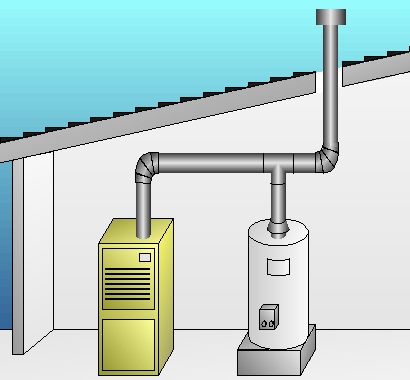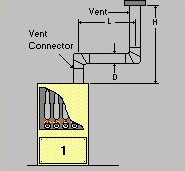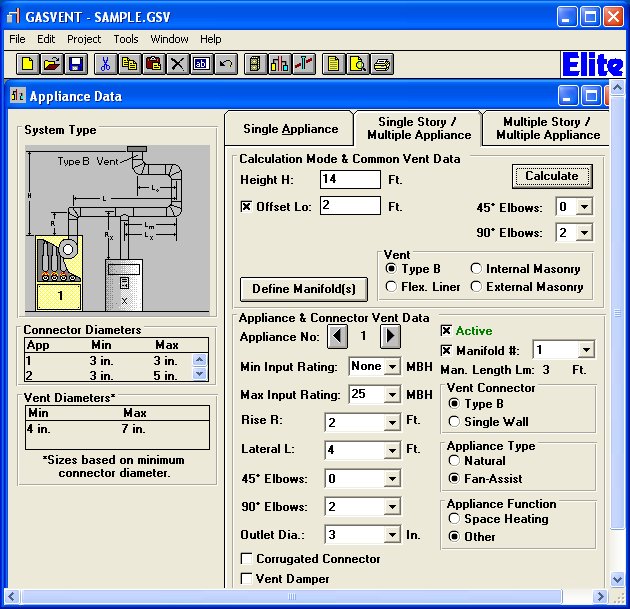|
Elite
Software Newsletter
|
October 30th,
2018 |
||
|
In this Issue |
|
Elite Software offers over 30 programs for all kinds of mechanical, electrical, and plumbing design applications. This monthly email newsletter will announce new software, tradeshow events, and tips on using existing software in new ways to address various code related issues. See previous newsletters here. The winter months are near, and gas fired equipment will come under heavy use. Furnaces, boilers, hot water heaters, etc. have combustion flue gases that need to be vented. Vents and connectors have to be sized correctly for the safe removal of these gases. Problems can occur from sizes that are either too large or too small. The venting tables in the 2018 International Fuel Gas Code (IFGC) are the ultimate authority on the sizing of vents and connectors for category 1 gas appliances. These tables are easy to enough to use, except that you have to factor in over 30 notes and exceptions on the values that you read from the tables. To make using the IFGC venting tables fast and easy, there exists one and only one computer program on the market for this purpose. It is the GasVent program from Elite Software. This Windows program is only $199, and you can read more about it here and below. More sources for HVAC equipment expanded ratings data have been added here for AirQuest, Keeprite, Maratherm, Kenmore and GrandAire. Elite's web based Rhvac Online modules for ACCA Manual J, D and S calculations continue to improve with lots of new Pop Up help. Modules are available for as little as $49 per year. Register for a free trial version today at elitesoftapps.com and check out new instructional videos for Rhvac Online Manual J, D and S calculations here. If you have any questions, please feel free to call 800-648-9523 or 979-690-9420, or send email to info@elitesoft.com. Sincerely, Bill Smith
|
|

|
|||
back to top Gas Vent Design
Many factors affect the required vent and connector sizes for gas appliances. The appliance input Btuh rating, outlet diameter of the appliance, number of elbows, single or multi-story application, vent gas temperature, ambient air temperature, vent wall conductivity, vent connector type, vent thermal mass, vent pressurization (fan assisted or natural draft), vent height, and vent lateral length all affect vent design. The IFGC manual, as seen here, provides a whole array of venting tables that take all these factors into account so that both minimum and maximum allowable vent and connector sizes can be specified for any given situation. Sizing vents correctly should not only be done at the initial time of installation, but should also be evaluated if you are called to inspect and service existing equipment. Many vent installations are not only in disrepair, but were never sized right in the first place! With software like GasVent (only $199), it is very fast and easy to check an existing system to see whether it is sized right, and if not, it is an important life safety hazard that you can offer to correct and repair. In the same way that you check for cracked heat exchangers and excess carbon monoxide levels, you should also be checking the vents and connectors for their condition and proper sizing. See the complete article on this topic here. See more details and download a trial copy of GasVent from here.
|
|||
| Copyright @
2018 Elite Software Development, Inc. Elite Software Development, Inc. | 2700 Arrington Road | College Station | TX | 77845 |
|||
| |
|
|
|
Unsubscribe instantly from these emails by clicking here.



